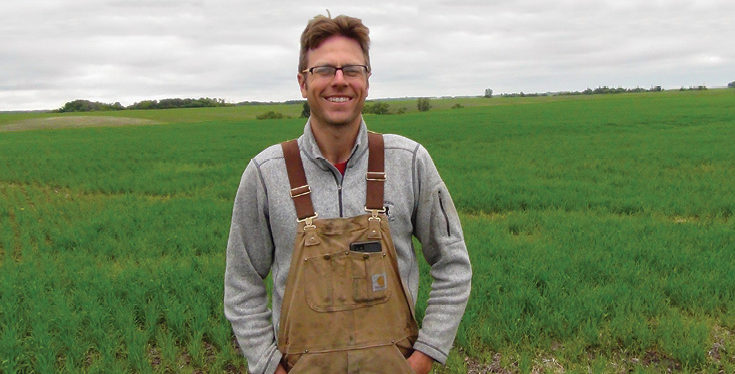No-Till Farmer
Get full access NOW to the most comprehensive, powerful and easy-to-use online resource for no-tillage practices. Just one good idea will pay for your subscription hundreds of times over.

The challenges Ryan Boyd and his father, Jim, tackled many years ago to establish zero-till on their Manitoba farm has paid dividends many times, especially last spring.
With rainstorms pelting the province almost daily, many farmers resorted to deep tillage to access their wet fields for seeding, or simply had to wait. The rain challenged the Boyds as well, but zero-till conditions let them plant a few fields that would have been impassable otherwise.
“We were able to travel over the residue and get the seed popped through into ground, which means we’ll have a crop instead of not having a crop,” Ryan says.
Long-term zero-till practices, along with interseeding, perennial forages and intensive grazing, are helping the Boyd family piece together a diverse, successful zero-till operation in western Canada.
The farm has been owned by the Boyd family for more than 70 years, but Ryan’s father began implementing zero-till practices 17 years ago using a Bourgault drill to implement a one-pass seeding and fertilizing system.
The Boyds currently run a herd of 400 beef cows on about 1,200 acres of cultivated tame pasture, and harvest 2,000 acres of cropland annually near Forrest, Manitoba.
Spring and winter wheat, and canola, are the go-to crops on the farm, taking up 60% of the grain acres, while spring peas, flax and oats play smaller roles.

Ryan says having forages and cattle involved in the operation is helping to improve soil organic matter and nutrient cycling and availability, and enhances water-holding…